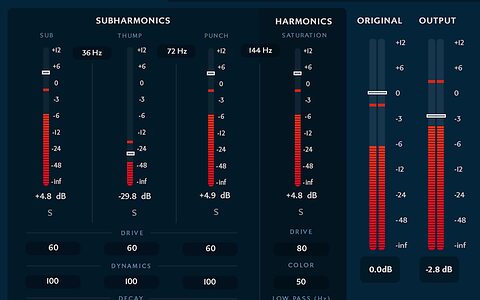
Leapwing RootOne: sub-enhancement plug-in unveiled
Leapwing's latest processor promises precise control over sub-harmonic generation.

Leapwing's latest processor promises precise control over sub-harmonic generation.

German sampling experts NI have just announced a major update to their flagship software bundle Komplete, along with a new version of Guitar Rig Pro.

French virtual-guitar-amp experts Two Notes have released a new higher-impedance version of their acclaimed Captor X reactive load/speaker simulator.

New hardware drum trigger features 16GB onboard memory, a rechargeable battery, dual trigger pads and a laser sensor.

Several employees at Universal Audio have lost their homes and all of their belongings in the California wildfires. Help them get back on their feet...

Grunge pioneer teams up with Native Instruments to produce hard-hitting drum instrument.

Big Reds house twin 10-inch woofers and offer low-frequency extension down to 28Hz.
The Haas Effect is a psychoacoustical effect named after Helmut Haas who first described it in 1949 and clarified his findings in 1951, although it was actually discovered by Lothar Cremer the previous year and called 'the law of the first wavefront'. It is also known as the Precedence Effect which is a far more descriptive term.
If one sound wave arrives at the ear shortly after another, the two are heard as a single sound, with the first arrival being used to determine the perceived sound location for the merged sound, even if the later sound is louder. For simple transient sounds, the time window for the two sounds to merge is below 5ms, but for more complex sounds like speech it can be as much as 40ms. A longer gap between the two sounds is usually perceived as an echo.
It is this precedence effect that allows accurate sound localisation in reverberant locations, since only the direct sound determines the perceived source location, and the later reverberant reflections are merged into the first sound.
However, if the second sound is significantly louder than the first it can become dominant in the perception of source location. It was determined that for time differences of up to 30ms, the first arrival determined the perceived source location even if the second arrival was as much as 10dB louder. Only when the second arrival was around 15dB louder did it become dominant in determining the source location.

Grammy Award-winning engineer and producer Dom Morley chats with Sam Inglis about the art and craft of recording and mixing vocals.